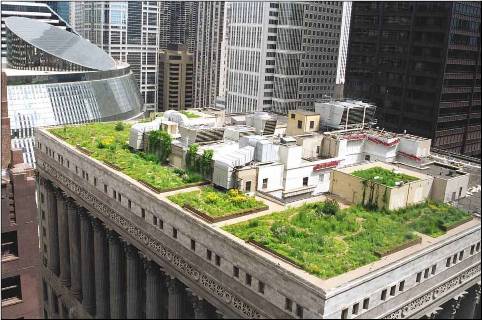You are here
Green Roofs
 Chicago City Hall Green Roof
Chicago City Hall Green RoofGreen roofs are unique, typically urban, environments -- they are remote and do not receive a great deal of maintenance. They experience extremes of temperature and water availability and are designed to fulfill a number of functions, primarily stormwater mitigation and heat-load reduction.
For this reason, most green roofs use plant genera such as Sedum that are extremely drought and cold tolerant. Despite their hardiness, even these plants will not survive extreme periods of drought. Poor plant survival negatively affects the functioning (rapid stormwater removal) from the substrate layer.
It is the interplay between substrate physical properties such as water-holding capacity and aeration that determine the efficiency of green roofs. Rainfall intensity, the time between rainfall events, substrate depth and substrate composition are the major variables that determine the ability of green roofs to buffer (slow down initial stormwater surge) any one specific storm event.
Sensing these properties in real-time will allow us to not only monitor roof functionality but integrate automated irrigation water applications to maintain maximal plant performance. This will be even more important in the future when LEED standards start to integrate grey (waste) water recovery systems into building design.
